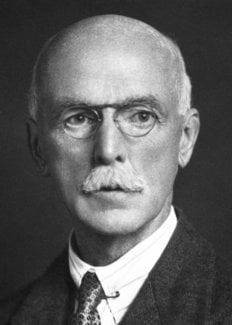Arthur Harden
Biographical

Arthur Harden was born in Manchester, England, on October 12, 1865; his father was Albert Tyas Harden and his mother Eliza Macalister. He was educated at a private school in Victoria Park (1873-1877) and at Tettenhall College, Staffordshire (1877-1881). He entered The Owens College in the University of Manchester in 1882, studying under Sir H.E. Roscoe, and graduated in 1885 with first-class honours in chemistry. In 1886 he was awarded the Dalton Scholarship in Chemistry and he spent twelve months during 1887-1888 working with Otto Fischer at Erlangen. He returned to Manchester as lecturer and demonstrator, and remained until 1897 when he was appointed chemist to the newly founded British Institute of Preventive Medicine, which later became the Lister Institute. In 1907 he was appointed Head of the Biochemical Department, a position which he held until his retirement in 1930, and in 1912 he received the title of Emeritus Professor of Chemistry, University of London. He continued his scientific work at the Institute after his retirement.
Before he went to London, Harden had studied the action of light on mixtures of carbon dioxide and chlorine. He entered the Institute with an excellent chemical background and applied his methods to the investigation of biological phenomena (among others: the chemical action of bacteria and alcoholic fermentation). He studied the breakdown products of glucose but he was soon to be drawn to the problem of the chemistry of the yeast cell. His classic study of the chemistry of the fermentation of sugar by yeast juice, which have advanced the knowledge of the processes of intermediary metabolism in all living forms, lasted for many years and provided a stepping-stone for many research workers in allied fields. Harden himself contributed to the vitamin field with a series of papers on the antiscorbutic and antineuritic vitamins and their occurrence in food and drinks.
Harden was Joint Editor (with W.M. Bayliss) of The Biochemical Journal from 1913 to 1938, and, in addition wrote numerous papers in scientific journals. He is the author of Alcoholic Fermentation, A New View of the Origin of Dalton’s Atomic Theory, and Chemistry for Advanced Studies (with Sir H.E. Roscoe), Inorganic Chemistry for Advanced Students, and An Elementary Course of Practical Organic Chemistry (with F.C. Garrett).
Harden was knighted in 1926. He was honorary Doctor of Science, University of Athens and honorary Doctor of Laws, Universities of Manchester and Liverpool. A Fellow of the Royal Society (1909), he received the Davy Medal in 1935.
He married Georgina Sydney Bridge, daughter of C. Wynyard Bridge of Christchurch, New Zealand, in 1900. They had no children. His wife died in January, 1928, and Sir Arthur on June 17, 1940, at his home in Bourne End, Buckinghamshire.
This autobiography/biography was written at the time of the award and first published in the book series Les Prix Nobel. It was later edited and republished in Nobel Lectures. To cite this document, always state the source as shown above.
The Nobel Foundation's copyright has expired.Nobel Prizes and laureates
See them all presented here.
